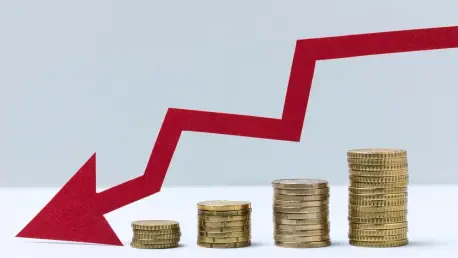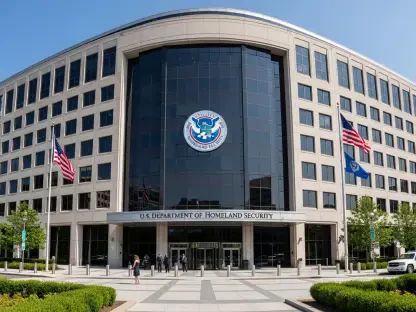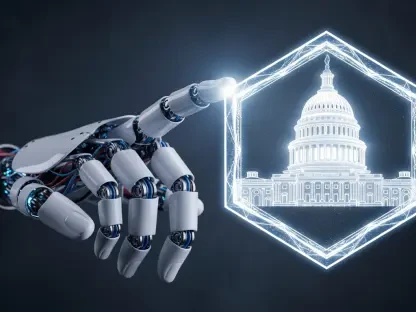The US economy, often regarded as the cornerstone of global financial stability, is currently suffering unprecedented losses, bleeding an estimated $15 billion each week due to a historic government shutdown now in its sixth week, marking a crisis of unparalleled duration and impact. This staggering figure, derived from analyses by leading economic authorities, highlights a situation that has surpassed all previous records. As federal operations grind to a halt, the ripple effects are felt across businesses, households, and international markets, raising urgent questions about the nation’s resilience. This report delves into the multifaceted dimensions of this shutdown, exploring its economic toll, social consequences, political underpinnings, and long-term implications for systemic stability.
Overview of the Government Shutdown Crisis
The ongoing government shutdown, now the longest in US history at six weeks, marks a critical turning point for the world’s largest economy. Exceeding the 35-day record set in prior years, this crisis has evolved into a complex challenge with profound economic, political, and social ramifications. Its scale is evident not only in financial losses but also in the disruption of essential services and the deepening of public discontent, positioning it as a pivotal issue for national and global observers alike.
Key stakeholders are grappling with the fallout, from 650,000 furloughed federal employees to businesses reliant on government contracts and vulnerable populations dependent on federal aid. Political parties remain entrenched in their positions, while media outlets and economic analysts, including Bloomberg and the Congressional Budget Office, provide critical data and forecasts that shape public understanding. This intersection of diverse interests highlights the shutdown’s far-reaching impact, demanding a comprehensive examination of its consequences across multiple spheres.
Economic Devastation: Quantifying the Financial Toll
Key Losses and Economic Indicators
The financial impact of the shutdown is staggering, with Bloomberg estimating weekly losses to the US economy averaging $15 billion, within a range of $10 to $30 billion. Specific sectors bear the brunt, including $24 billion in frozen federal contracts and $2.5 billion in halted small business loans, affecting thousands of enterprises. If the shutdown extends through November, projections suggest a reduction in GDP growth by two percentage points, a figure that underscores the depth of this economic wound.
Further compounding the issue, the Congressional Budget Office warns of a permanent GDP loss of $14 billion, even after operations resume. Moody’s Chief Economist Mark Zandi has raised alarms about heightened recession risks by 2026, pointing to a fragile economic environment already strained by inflation and labor market challenges. These indicators paint a dire picture, suggesting that the current crisis may inflict damage far beyond temporary disruption.
Broader Effects on Businesses and Consumers
Beyond raw numbers, the private sector faces cascading effects, with the US Chamber of Commerce noting significant barriers to business expansion and hiring. Companies dependent on federal funding or contracts are forced to scale back, creating a domino effect that stifles economic dynamism. This uncertainty permeates markets, leaving investors wary and businesses hesitant to commit to long-term plans.
Consumers, too, are feeling the pinch, particularly with the threat of reduced spending during the crucial December shopping season looming large. Family budgets are strained as confidence in economic stability wanes, exacerbating concerns about a sustained downturn. Looking ahead, recovery appears daunting, with a labor market already under pressure and inflationary trends complicating efforts to restore normalcy.
Social Hardship: The Human Cost of the Shutdown
The shutdown’s toll extends deeply into the social fabric, hitting low-income families hardest. An estimated 42 million Americans face the risk of losing access to SNAP food assistance, with emergency funding of $4.65 billion covering only a fraction of monthly needs. This gap leaves countless households struggling to meet basic nutritional requirements, amplifying public frustration with governmental inaction.
Federal employees are equally affected, with 650,000 furloughed workers enduring unpaid status, potentially pushing the unemployment rate from 4.3% to 4.7%. Personal accounts, such as that of Melissa Lewis, a mother from Tennessee unable to afford essentials for her children, bring these statistics to life. Her story reflects a broader narrative of despair among those caught in the crossfire of political deadlock, highlighting the urgent human dimension of this crisis.
Political Gridlock: Deepening Divisions and Stalemate
At the heart of the shutdown lies a profound political divide, with tensions between Republicans and Democrats reaching new heights. President Trump has publicly criticized his own party, attributing recent electoral setbacks to the crisis and advocating for drastic measures like eliminating the Senate filibuster rule to force legislative action. This proposal, however, has met with lukewarm support from fellow Republicans wary of altering long-standing procedural norms.
Democrats, meanwhile, are seizing on public discontent, refusing to negotiate budget resolutions without extensions for healthcare support. Political strategists suggest this stance is designed to capitalize on voter anger, positioning the party favorably in the eyes of a frustrated electorate. Reports indicate an impasse with no immediate resolution in sight, as both sides dig in, risking further prolongation of the crisis and potential shifts in legislative balance.
The lack of compromise fuels a vicious cycle, where political posturing overshadows the immediate needs of citizens and businesses. This entrenched stalemate, widely covered by political analysts, threatens not only current stability but also the future of bipartisan cooperation, casting a shadow over governance structures and their ability to respond to national emergencies.
Systemic Strain and Erosion of Trust
The broader implications of the shutdown erode public trust in government institutions, a trend identified as a critical long-term consequence. Confidence in federal reliability is waning as citizens witness the failure to maintain basic functions, a sentiment echoed in analyses by leading financial publications. This growing disillusionment poses a risk to civic engagement and the perceived legitimacy of public systems.
Essential services are also under strain, with air travel disruptions emerging as a stark example due to shortages of air traffic controllers. The US Transportation Secretary has warned of “widespread chaos” if the situation persists, pointing to potential safety and logistical nightmares. Such failures highlight the systemic vulnerabilities exposed by the shutdown, raising alarms about the nation’s operational resilience.
Globally, the crisis casts doubt on the US’s standing as an economic leader, with possible ripple effects on international markets. Investors and foreign governments are closely monitoring the situation, concerned about the stability of a key global player. This intersection of domestic dysfunction and international perception underscores the shutdown’s far-reaching impact, challenging the very foundations of economic and political trust.
Future Outlook: Long-Term Implications and Recovery Challenges
Looking forward, the shutdown threatens to leave lasting damage, with experts like Mark Zandi warning of “permanent scars” on economic growth and investor confidence. Even if resolved soon, the cumulative losses and disruptions may hinder the nation’s ability to rebound fully, particularly in a climate of global economic uncertainty. The specter of sustained impact looms large over forecasts for the coming years.
Emerging risks compound these challenges, including continued political intransigence that could delay critical policy decisions. Shifts in consumer behavior, driven by diminished confidence, alongside external pressures such as fluctuating global conditions, further complicate recovery efforts. Analysts stress that the window for mitigating damage is narrowing, with each passing week adding to the economic and social burden.
Urgent resolution remains paramount to avert deeper consequences, yet pathways to compromise appear elusive. Potential interventions, whether through emergency legislative measures or third-party mediation, are under discussion, though their feasibility remains uncertain. The focus now shifts to identifying actionable strategies that can restore stability and prevent a recurrence of such a debilitating crisis.
Conclusion
Reflecting on the extensive analysis, the historic government shutdown has inflicted a profound toll, with weekly economic losses of $15 billion and widespread social hardship marking a dark chapter in national governance. Political deadlock has deepened divisions, while systemic strains and eroded public trust have revealed vulnerabilities in foundational structures. Moving forward, actionable steps demand bipartisan cooperation to expedite resolution, alongside targeted relief for affected workers and families. Rebuilding confidence in institutions requires transparent communication and swift policy reforms to address underlying issues. As the nation looks to recover, prioritizing economic stabilization and fostering dialogue across party lines emerges as critical considerations to prevent lasting damage and ensure resilience against future crises.









